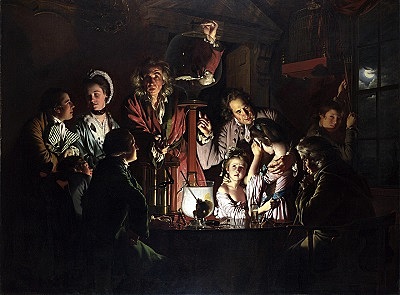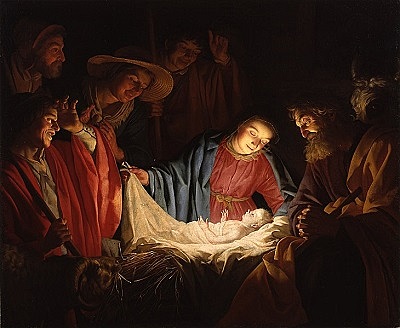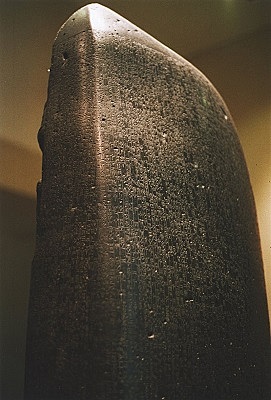Heaven and Earth: Points of Convergence in the Arts and Adam Smith
September 2, 2020


Even the most passing reflection reveals that economic activity and artistic production have gone hand in hand since antiquity. But however intuitive the connection between the two disciplines appears, the question as to the character of their relation remains an open one. Adam Smith’s work as a political economist offers one way to approach the topic. This essay asks what the history of art can contribute to the understanding of Adam Smith, and how Adam Smith’s writing can be understood with respect to the history of art. The eighteenth century, when Smith wrote his seminal The Wealth of Nations (1776), provides a particularly pivotal period with which to engage these questions. Taking Smith’s position as an Enlightenment thinker as its starting point, it underscores a convergence of the two perspectives with respect to subject matter, while arguing for a methodological distinction in terms of the epistemological aspirations inherent in political economy and artistic interpretation.
The history of the arts has been, in the broadest terms, political in nature. For most of civilization the authority of the fine arts directly legitimized the authority of the ruling classes. The history of art is primarily a sustained account of the powerful using the arts to influence and manipulate the masses. However, all of that started to change in eighteenth-century Europe. A shift of tremendous magnitude took place beginning with the articulation of a political individual that began with Hobbes and matured with Locke, the philosophes, and others. The Age of Reason’s emphasis on individual freedom transferred over to the artistic realm as well. A 180-degree shift took place in accord with the democratic liberalism that put The People in charge of their political fortunes. Suddenly the arts began to be used to censure the powerful and challenge authority. Slowly at first, but by the late nineteenth and early twentieth centuries the role of the artist as an individual voice was used increasingly to confront entrenched hierarchies and criticize the abuses of the powerful.
Yet also important to this discussion is that the history of art is overwhelmingly religious. Religion, intimately linked to the world’s political establishments for most of humanity’s cultural history, has been crucial to the development of artistic achievement and its societal significance. From the Egyptians and the Greeks to Judaism, Christianity, and Buddhism, ideas of Beauty guided economic expenditures as the arts helped the powerful fulfill various spiritual and political aspirations. Of course, Enlightenment thought eschewed religious dogma in favor of empirical investigation and an apotheosis of rationality, contradicting somewhat the overwhelmingly ecclesiastical tenor of aesthetic output in Europe up until that time. Any understanding of the relationship between Smith’s economic ideas and the realm of art needs to take this dynamic into account.
Methods
One thing we can say about Smith is that there is nothing metaphysical about his writing. His approach to economic, moral, and aesthetic phenomena is descriptive, analytical, assertive, as opposed to speculative or ontological. In keeping with Enlightenment methods, his philosophies are based on acute observation. His approach may best be characterized as systematic. Indeed, when considering economic or physical forces, a systematic methodology works best, as its scientific tone and predisposition is appropriate to an avenue of inquiry that seeks to remove subjective biases. However, this method fails to capture something important when discussing art: its interpretive and spiritual value as a unique subjectively-oriented artifact, the precise opposite of what systematic thinking affords. Interpretive here can be understood both as revelatory and in the sense of finding personal meaning. Smith’s analysis of the mimetic import of art in “Of the Nature of That Imitation which Takes Place in What Are Called the Imitative Arts” is perceptive and methodical, but unfortunately lacks any depth of thought into the content of an artwork. For a writer who sought to explicate the intricate but subtle essence of his subjects, his forensic analysis of an essential artistic process leaves one with a certain feeling of emptiness, which is decidedly not what most artists intend when creating an artwork.
Smith was keenly interested in trying to figure out how to access the worth of art, its artistic value. But he reasoned that there might not be any relationship between the amount of work dedicated to an artistic object and its value or beauty. In other words, it appears that he could not entirely account for genius. He considered art an economic anomaly, “unnatural” in that it has no natural market value, only an exchange value. In an age without recording devices, Smith categorized music in the non-commodifiable somewhat undignified category of “menial labor” during his analysis in The Wealth of Nations: “In the same class must be ranked, some both of the gravest and most important, and some of the most frivolous professions: churchmen, lawyers, physicians, men of letters of all kinds; players, buffoons, musicians, opera-singers, opera-dancers, etc.” (Smith, Vol. 1, Bk II, Ch.III, p.314).
On the other hand, Smith thought that the arts belonged to what we now refer to as the Arts and Sciences. Like his contemporaries, who believed in a contiguous line of knowledge between disparate phenomena, he saw the world in an interdisciplinary or multi-disciplinary manner. There were no isolated fields of inquiry. An excerpt from Smith’s writing provides a sort of object lesson of his systemic and inclusive view of matters of philosophical inquiry:
Systems in many respects resemble machines. A machine is a little system, created to perform, as well as to connect together, in reality, those different movements and effects which the artist has occasion for. A system is an imaginary machine invented to connect together in the fancy those different movements and effects which are already in reality performed...The first systems, in the same manner, are always the most complex, and a particular connecting chain, or principle, is generally thought necessary to unite every two seemingly disjointed appearances: but it often happens, that one great connecting principle is afterwards found to be sufficient to bind together all the discordant phenomena that occur in a whole species of things. (History of Astronomy IV.19)
Smith’s empirical method—surely influenced by his affinity with Hume—is illustrated here in a discussion about Newton’s system of planetary motion; however, it is salient to this discussion in his “History of Astronomy.” The notion of a contiguous line of knowledge among phenomena opens up a way to understand Smith’s work in terms of the larger themes underlying artistic production since prehistory, demonstrating a convergence of thought between the two.
The Realm of Art
It is not commonly acknowledged as such, but the history of art began in the sky. The order, perfection, and beauty of the cosmos were used as an archetype in the construction of the institutions of civilization and society and the buildings used to embody them. The Greeks perfected this with their art and temples. Both buildings and sculptures were constructed implementing the underlying aesthetic/mathematical principles of symmetria (the commensurability in measure of parts to that of the whole), rhythmos (pattern), and harmonia (musical scale). In virtually all endeavors, the Greeks sought to achieve order (kosmos) in things to assuage a deep-seated anxiety at life’s seemingly random, undefined, unmeasured, changes (khaos). The metopes and friezes of the Parthenon, a religious temple despite its modern association with secular Greek political thought, illustrate this explicitly. In this way we see how the Greeks sought to understand the human form in relation to the cosmos, and vice versa, through creating artifacts of tremendous beauty and meaning. The pervasive use of religious art and architecture in the ancient world attests to the existence of two worlds—sacred and profane—within the worldview of virtually all of the civilizations of antiquity.
Interestingly, Smith’s Enlightenment era view of the universe, while not explicitly religious, likewise looked to the heavens to find inspiration for order and meaning:
Of all the phenomena of nature, the celestial appearances are, by their greatness and beauty, the most universal objects of the curiosity of mankind. Those who surveyed the heavens with the most careless attention, necessarily distinguished in them three different sorts of objects; the Sun, the Moon, and the Stars These last, appearing always in the same situation, and at the same distance with regard to one another, and seeming to revolve every day round the earth in parallel circles, which widened gradually from the poles to the equator, were naturally thought to have all the marks of being fixed, like so many gems, in the concave side of the firmament, and of being carried round by the diurnal revolutions of that solid body: for the azure sky, in which the stars seem to float, was readily apprehended, upon account of the uniformity of their apparent motions, to be a solid body, the roof or outer wall of the universe, to whose inside all those little sparkling objects were attached. (History of Astronomy IV.1)
Smith is pointing to the universal human proclivity to see the sky as a hallmark of magnificence, a touchstone of human consequence, and a rubric for large-scale understanding. It is a propensity that dates back to humanity’s origins, when the religious impulse to prescribe theistic intention to the systematic certitude of cosmological order helped formulate terrestrial institutions.
Culture writ large still organizes itself in cosmic terms: our calendars (the days of the week are named after the sun, moon and the planets/antique gods; the months—or moons—that frame our economic expenditures) and personal identities (e.g., one’s age as understood in the number of revolutions around the sun). In fact, some nineteenth-century writers accused Smith of a hidden theism viz. natural law and natural liberty, “that ultimately economic theory and practical program depended on his belief in a natural order of the universe, part of the rational theology of the time.” (Bitterman, 488). In light of his “History of Astronomy,” Smith’s “invisible hand” in The Wealth of Nations (Smith, Vol. 1, Bk IV, Ch.II, p. 421) may evince the patina of a spiritual force behind his systematic account of free market economic activity, yet his view that the societal benefit of such activity on the part of the individual agent is unintentional seems to undercut this contention.
Nevertheless, if Smith assumed an overarching natural order in his writings, it is not unreasonable to think that such a system had a theological foundation. Eighteenth-century paintings roughly contemporaneous with Smith’s work point to this dynamic. Joseph Wright of Derby’s An Experiment on a Bird in the Air Pump (1768; Figure 1) is an illustration of how Enlightenment thinkers conceived of their place in the diorama of human knowledge and existence. The air pump creates a vacuum within the bell jar, threatening the life of the bird inside. Here, the philosopher/scientist and his grasp of natural forces is the source of salvation. The light of scientific knowledge permeates the darkness, delivering life where death was imminent. The darkness is a metaphor for ignorance, a naïve unawareness of the principles of science and nature. Smith’s view of artistic methods underscores and embodies this sentiment. In “The Imitative Arts,” Smith writes, “The pleasing wonder of ignorance is accompanied with the still more pleasing satisfaction of science.” Mimetic exactitude in an artwork may amaze and astound in a “clownish” way, but such pleasure “cannot give the satisfaction of science.” (I.16-17)

The scene, in the end, is a cosmic one. The open window reveals the moon, the only other light source in the painting, placing the event in relation to the sky, the universal system within which all other systems exist. Paintings such as these looked back to Baroque religious precedents (Figure 2), where the despair of darkness is assuaged by the soteriological force of Jesus Christ. The meaning of An Experiment on a Bird in the Air Pump hinges on this association. Knowledge of God illuminates the gloom. The nativity scene is as natural as any force of nature harnessed by science. It is an equation that surely Smith had a grasp upon on some level, both in his economic and philosophical writings.

Art and Economics
Finally, in discussing economic activity with respect to the arts, one thing that can be said is that both art and economics have been around as long as humans have organized themselves in groups and sought to exchange things. Indeed, cultural artifacts going back to the ancient civilizations of Mesopotamia are indicative of how trade and commerce have been important to the generation of objects of worth and beauty, as well as in organizing the economic activity of a society. In addition to documenting their legends and gods, the ancient Sumerians formulated a writing system on cuneiform tablets in order to keep track of the trade and commerce needed to sustain their population. Scribes (dubsar) were trained in writing pictographic letters and contracts onto clay tablets. These “documents” would record the allocation of rations and keep track of food supplies.
The Stele of Hammurabi is another artifact important to the cultural history of humanity. Created by the King of Babylon in the 18th century BC, the artwork catalogues 282 laws overseeing the conduct of those within the borders of his empire. Many of these laws governed the economic activity of merchants, their workers, and the contractual obligations between them. For example, one decree states, “If a merchant entrust money to an agent (broker) for some investment, and the broker suffer a loss in the place to which he goes, he shall make good the capital to the merchant.” Divinely ordained by the deities of Babylon, inscriptions on the stele speak of bringing prosperity to the land and furthering the well-being of mankind. Order is thus achieved over the chaos of injustice through the sacred mandate of the gods, an achievement solidified in an object of art, history, and literature sculpted into basalt, one of the hardest and most difficult stones to fashion.

Smith clearly saw the polytheism of antiquity as “heathen” and a result of “vulgar superstition.” Greek philosophy superseded whatever legal, scientific, or theoretical achievements the Egyptians or Chaldeans may have devised. Moreover, he was most likely sympathetic with Hume’s view of Christian ecclesiastics as “highly pernicious.” Nonetheless, Smith’s interest in astronomical matters combined with his belief in a systemic chain linking seemingly disjointed phenomena, as stated in the “History of Astronomy,” allows one to see his work as part of a larger humanistic structure as well, one that sees a link in his undoubted interest in the earthly concerns of mankind’s economic mechanisms, knowledge of the cultural history of humankind, and his philosophical attention to the theories of planetary motion.
The common root of artistic production and economic activity can be broached with an essential but not so obvious point: the arts are embedded in humanity’s quest to survive. The fact that art is a major element in the earliest records of human activity—whether cave paintings, vulture- bone flutes, shamanistic dances, or necklace beads—suggests that creative objects with aesthetic value were critical to the success of primitive human societies. If the arts are related to both being human and to human survival, it is not surprising, as Thomas Sowell states, that “Basic principles of economics apply around the world and have applied over thousands of years of world history. The policies that led to rising prices under Alexander the Great have led to rising price levels in America, thousands of years later.” (Sowell 1) No matter what economic system one is considering, the basic principles of economics have endured because—like art—they are a basic part of the human condition. It seems clear, given the discussion above, that one can read Smith’s work within this same overarching framework.
Postscript
Adam Smith’s relationship to art today is wrapped up in the eighteenth-century political shift discussed above. The conceptual turn in art since the 1960s has maintained a heavy political imprint in line with the anti-establishment tenor of post-Enlightenment expression. Yet the power structures under assault now are the abuses of big business, the commercialization of society, and the methods of traditional art itself, the last still retaining its association with the hegemonies of old. Contemporary art—particularly visual art—is still concerned with challenging the powerful, but is imbued to a large extent with an anti-capitalist/Marxist overtone that directly contradicts Smith’s free-market capitalism. Social commentary, identity politics, and radical environmentalism enervate artistic production and the dialogues surrounding it.
The dynamic between science and religion persists in present day aesthetic discourse, and to a great extent the issue continues to be a methodological one. Technology-based modes now dominate the hearts of today’s artists. Of course, people still paint and sculpt, and thousands visit museums that exhibit contemporary art and historic masterpieces, but those creative instruments are no longer the way for an individual to make an influential, large-scale social or political statement. Film, telecommunication, even video games are now the prime locus of humanity’s creative energy. The great minds of today are likely to be computer programmers and not aesthetically oriented polymaths. If religion plays a role, it is primarily one of critical engagement. Nowadays, both religion and art are associated with the past, and together are allied with the plastic instability of subjective truth. Faith and feeling, spirit and sentiment, are esteemed less in terms of their pragmatic tangibility than the positive knowledge of objective rigor and its technological output.
If this view of events is accurate, the best way for the arts to impact society is to emphasize their Enlightenment era philosophical legacy: individual liberty and the political strength that freedom affords the creative mind to affect societal welfare. Freedom is not an objective effect or object but a spiritual cause or desire. To succeed, faith and feeling, spirit and sentiment, do not need to supplant scientific progress, but to argue for their consubstantial affinities to flourish holistically as one system of humanistic endeavor. Adam Smith is thus still relevant to the arts today.
References
Bittermann, Henry J. “Adam Smith's Empiricism and the Law of Nature: I.” Journal of Political Economy Vol. 48, No. 4 (August 1940): 487-520.
Otteson, James R. Adam Smith: Selected Philosophical Writings. Luton: Andrews UK, 2004.
Smith, Adam. An Inquiry into the Nature and Causes of the Wealth of Nations by Adam Smith, edited with an Introduction, Notes, Marginal Summary and an Enlarged Index by Edwin Cannan (London: Methuen, 1904). Vol. 1. 10/3/2019. <https://oll.libertyfund.org/titles/237>
Smith, Adam. Essays On, I. Moral Sentiments: II. Astronomical Inquiries; III. Formation of Languages; IV. History of Ancient Physics; V. Ancient Logic and Metaphysicis; VI. The Imitative Arts; VII. Music, Dancing, Poetry; VIII. The External Senses; IX. English and Italian Verses. Alex. Murray & Son, 1869.
Sowell, Thomas. Basic Economics: A Common Sense Guide to the Economy. Basic Books: New York, NY, 2007.